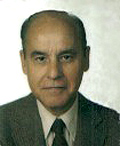Ben Tanosborn
It takes a horrific event, one close to home and which affect people we identify with, to give us a momentary shock capable of re-sensitizing us; taking us, at least in the short term, from a state of indifference to one of genuine concern. This December 14, the massacre at Sandy Hook Elementary School in Newtown, Connecticut, was such an event.
As a result, an urgent call to national unity in purpose took place which enlisted some somber political leaders and the citizenry as well: Obama from his White House pulpit; the media: international, national and local; and citizens throughout the land… all mourning innocent lives taken in yet another senseless act of violence.
And as a follow-up, the media, which owes its very existence to uncommon and extreme behavior in different areas of society, was quick to become the conduit to the recurring two themes which are always topical after these violent acts involving firearms: gun control and mental health… for we are quick to associate mass killings with fast-firing weapons in the hands of people likely to be, or portrayed to be, mentally deranged.
Once again, a so-called fact-finding process was initiated at the White House five days after the massacre, President Obama appointing Vice President Biden to head such lofty detail with a high priority underlining and a compressed period of time in which to obtain answers for the people of this nation.
And, once again, in a defensive preemptive move, the NRA (National Rifle Association) was telling the nation a week after the event, through its spokesman-executive, Wayne LaPierre, what needs to be done to avoid these holocaustic events: more guns, he said, but this time in the hands of the good guys; placing security guards in every school in the country. His statement, carried in nationwide television, received the applause of many – certainly just about all NRA 4-million members – and the dismay of many more. And Mr. LaPierre’s condemnation of the culture of violence which permeates our society, accentuated by how he claims this culture to be portrayed in the media, certainly found a receptive and accepting audience; an audience, however, where many, if not most, are at odds with what the NRA stands for, particularly in the area affecting citizens’ rights to own assault weapons.
I listened to Mr. LaPierre with a neighbor, a retired teacher (Washington State public schools). I expected her to make a comment with reference to LaPierre’s proposal of having Congress appropriate funds to provide armed guards for all schools in the nation, but her statement was more sweeping and directed to what she claimed to be the most macabre industry in the United States: Armament or Weapons. “The two sanguine lobbies in American politics, NRA and Pentagon, “she stated, condensing her remarks to blaming the Pentagon for being an international killing organization and the NRA for being its domestic counterpart – its true goal, according to her, to make all Americans gun owners, all of us both victims and perpetrators of violence.
But… is it the gun culture, or mental health, or a violence-permissive society, or an overexposing media, to blame for the United States being the most violent country, severalfold, in the industrialized world? And, since the effects of violence are cumulative, wouldn’t it make much more sense to name all these things, all intervening variables, as a sum total which then becomes the culprit: the causal variable?
Aggression has become here in America, more so than in other advanced societies, a way of life, a social currency that we cannot live without. From childhood we have been inculcated the legitimacy of aggression in religion, in sports, in business, in just about every facet of our lives, including the acceptance of gratuitous wars against enemies whose only crime might be to think differently from us, or who prefer not to be influenced or dominated by us.
We may deny it, but in America we have made violence not only an acceptable form of resolving conflict, but the preferred and best approach: the preemptive way. And, not surprisingly, our heroes are those who excel in violence… all too often, soldiers and police officers.
As we mourn the innocent victims of Newtown, Connecticut, it would be good for our souls to look back at our violent acts as a powerful nation inflicting pain and death to innocent victims in the world either directly, through war, or indirectly, through both sanctions and embargoes.
Although aggression and violence control cannot be legislated, as gun control can, it may be in our common interest to rethinking our lives, and perhaps take some initial small steps to restrain that aggression which permeates through them.

Ben Tanosborn is a syndicated columnist. He can be reached at tanosborn@yahoo.com
Ben’s website: www.tanosborn.com